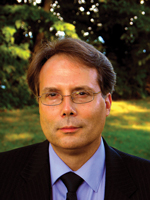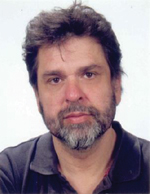A Column by Dr. Stan Trout
The inspiration for this article came from two completely independent sources that I happened across at the same time, reading a New York Times article and teaching a class about the development of nuclear weapons.
The first inspiration is a New York Times article written by William Broad and titled “Billionaires with Big Ideas are Privatizing American Science”. [1] The article details a new trend in the funding of scientific research in the US. Traditionally scientific research has been funded by US Government, in one form or another, at least since the end of World War II. As Mr. Broad points out, there appears to be a new way of thinking about funding scientific research. Today many super-wealthy people are now sponsoring research on scientific topics where they have a special interest. They are doing this as individuals, not under any corporate umbrella. So Bill Gates, Eric Schmidt and Larry Ellison are not only captains of industry, each is a significant funding source for basic science, in very targeted areas. For people with the means to fund large projects, it must be very gratifying to be able to move science forward, almost singlehandedly. For the researchers, it must be wonderful to keep working on projects that might not otherwise be funded, or to be subject to the uncertainty of future budget cuts, if sponsored by the government. One of the drivers in this movement is efficiency. Private research can often be more efficient, without the overhead of government funding.
The second inspiration comes from a course I taught in the spring at St. Olaf College on the development of nuclear weapons, our book was a classic on the topic, written by Richard Rhodes. [2] We followed the history of nuclear physics from about 1900 until the end of World War II. It is an equally fascinating and improbable story, developing atomic bombs just a few short years after the discovery of neutrons, nuclear fission and other bits of basic science. One person who really stands out in this story is a scientist named Leo Szilard. He was born in Budapest in 1898 and educated in Berlin, but slowly made his way to the US after the rise of the Hitler, like so many people with Jewish backgrounds. For most of Szilard’s professional life, he had no formal position in physics. Instead, he moved around frequently and made most of his contributions by collaborating informally with former colleagues and friends. He was truly a private scientist, seeking the truth on an ad hoc basis. He is famous for having insights about nuclear fission while in the bathtub, a likely venue for him, since he had no laboratory. However, he was one of the very few people who had the vision to see that nuclear weapons were possible. Many scholars believe the bomb could not have been developed in time to end the war, without Szilard’s direct involvement in specific critical events, because he kept things moving forward.
The connection between these two dissimilar ideas from different centuries is that we could develop the next generation of permanent magnets with a combination of private funding and private scientists, to keep things moving forward in our industry without waiting for the traditional resources to become interested in our small corner of the World. Private funding could come from a wealthy individual, who understands that the wide spread use of permanent magnets is a very compelling way to attack our energy problems on a global scale, the same way the Gates Foundation has leveraged wide spread immunizations as a way to improve global health.
References
[1] Billionaires with Big Ideas are Privatizing American Science, William Broad, NY Times March 15, 2014, accessed May 15, 2014
[2] The Making of the Atomic Bomb, Richard Rhodes, Simon and Schuster 2012
 About the Author
About the Author
Dr. Stan Trout has more than 35 years’ experience in the permanent magnet and rare earth industries. Dr. Trout has a B.S. in Physics from Lafayette College and a Ph.D. in Metallurgy and Materials Science from the University of Pennsylvania. Stan is a contributing columnist for Magnetics Business & Technology magazine. Spontaneous Materials, his consultancy, provides practical solutions in magnetic materials, the rare earths, technical training and technical writing. He can be reached at strout@ieee.org.



